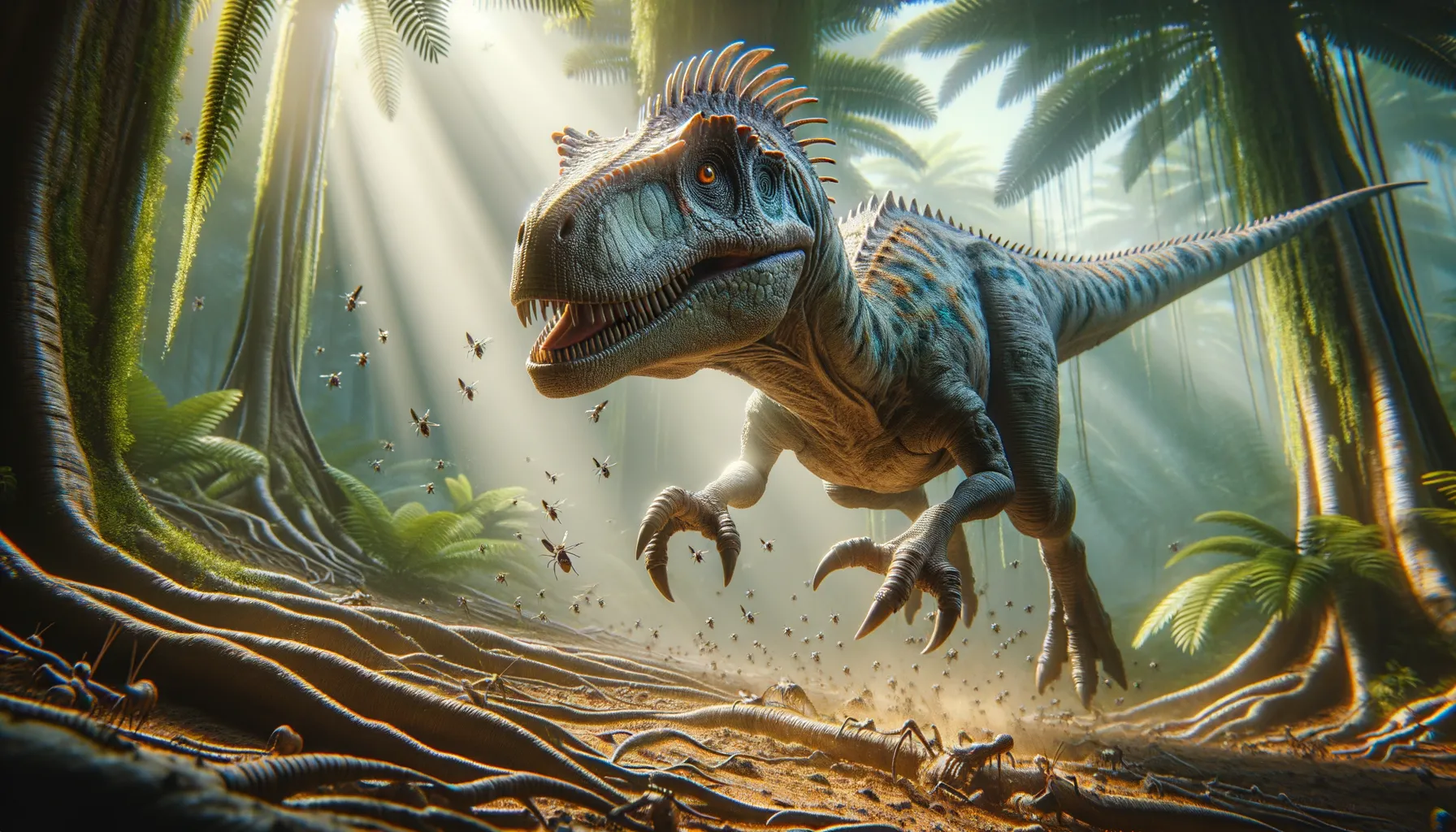
Shishugounykus
Insectivore with a Jurassic twist!
Period
Jurassic
Length
Roughly 3 meters in length.
Height
Approximately 1.5 meters tall.
Weight
Weighed around 50 kilograms.
Shishugounykus was a small theropod dinosaur known for its specialized adaptations for insectivory. Existing in the Jurassic period, this creature possessed unique features that facilitated foraging and survival in its environment. Discovered recently in China, it has intrigued scientists with its puzzling ecology and evolution. Its small size and lightweight build aided its agility, while its long arms and specialized claws were perfect for digging into insect nests.
Diet
Shishugounykus primarily fed on insects with its specialized claws and teeth. Its diet is believed to have included large quantities of ants, termites, and other small invertebrates which it extracted from nests and soil.
Hunting
This dinosaur likely used its keen sense of smell to locate insect nests. It would dig with its strong forelimbs, using its claws to dismantle nests before consuming the insects within.
Environmental challenges
During the Jurassic period, Shishugounykus faced challenges such as climate fluctuations and competition for food. Predators also posed a constant threat to this small dinosaur. It had to adapt to the changing landscape as volcanic activity and tectonic shifts shaped its habitat.
Speed
Moderate, adapted for quick bursts.
Lifespan
Estimated between 20 and 30 years.
First discovery
Discovered in Shishugou Formation, China, in 2017.
Fun Facts
- Shishugounykus is a small, bird-like dinosaur that lived during the late Cretaceous period.
- Its name, Shishugounykus, means 'Shishugou claw', referencing its distinctive claws and the place where it was discovered.
- This dinosaur is part of the Alvarezsauridae family, known for their unique, single-clawed hands.
- Shishugounykus likely used its strong claw for digging into insect nests or rotting wood to find food.
- Although small, it had a robust, strong body structure, suggesting it was an active forager.
- Shishugounykus and its relatives provide important insights into the evolution of birds from dinosaur ancestors.
- It's believed that this dinosaur was covered in feathers, much like modern birds, which helped keep it warm.
Growth and Development
Shishugounykus likely started as a small hatchling, growing rapidly in its early years to reach its full size. This growth rate would have been crucial for avoiding predation. Juveniles may have had different dietary needs compared to adults, focusing more on readily available and accessible food sources.
Habitat
Its habitat was a dense forested area with plenty of undergrowth, which provided both food and cover from predators. Water sources such as rivers and lakes were common, offering hydration and additional food sources. The environment was rich in biodiversity, supporting a variety of life forms alongside Shishugounykus.
Interaction with other species
Shishugounykus coexisted with other small and large dinosaurs, competing mainly for territory and specific food sources. Its interactions were likely minimal with larger predators, focusing more on evasion. It might have had symbiotic relationships with other insect-eating creatures that helped it survive.
Natural lifespan
In the wild, its lifespan was naturally shorter due to predation and environmental hazards.
Reproduction
Shishugounykus likely laid eggs in secure, hidden nests. Clutch sizes might have been small, reflecting an evolutionary strategy focusing on care for fewer offspring. Parental investment was essential to protect the young from predators and environmental threats.
Social behaviour
It might have lived in small groups for better protection against predators. Social structures could have revolved around cooperative foraging or shared nesting sites. Adults may have supervised the juveniles, teaching them essential survival skills.
Fossil locations
Fossils were mainly found in the Shishugou Formation, offering insights into its habitat and lifestyle. These locations are crucial for understanding the environmental context of the dinosaur's life. The discovery site has become significant for paleontologists studying the Jurassic era in Asia.
